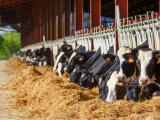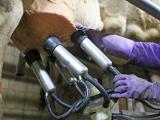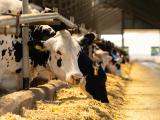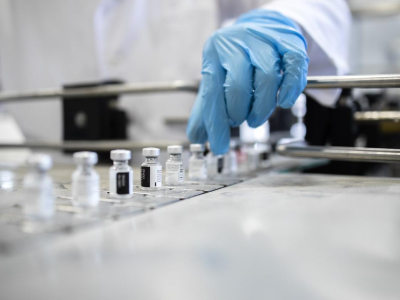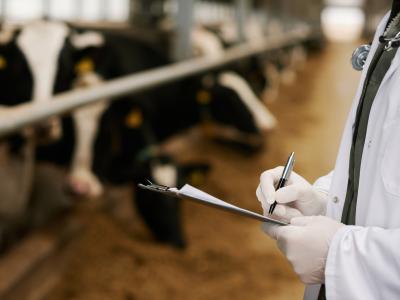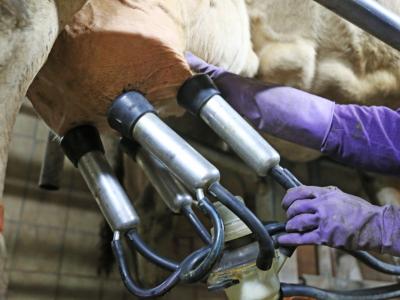May 5, 2005 (CIDRAP News) A bleak picture of the world's ability to cope with an influenza pandemic is painted in an essay by infectious-disease and bioterrorism expert Michael T. Osterholm, PhD, MPH, in this week's New England Journal of Medicine.
A pandemic emerging today would find the world severely short of vaccine production capacity and medical supplies and could bring the global economy to a standstill, writes Osterholm, director of the University of Minnesota Center for Infectious Disease Research and Policy, publisher of the Web site.
"We need bold and timely leadership at the highest level of the governments in the developed world; these governments must recognize the economic, security, and health threats posed by the next influenza pandemic and invest accordingly," Osterholm asserts.
He says that if the H5N1 avian flu virus now circulating in Asia sparks the next pandemic, it is more likely to mimic the disastrous pandemic of 1918 than the milder events of 1957 and 1968. Such a plague could kill 1.7 million people in the United States and from 180 million to 360 million worldwide, he estimates.
The H5N1 virus has killed at least 52 people in Asia in the past 17 months but has shown very limited ability to spread from person to person. If it gained the ability right now to spread quickly among humans while remaining highly virulent, the world would face a grim situation, Osterholm writes.
"There would be a scramble to stop the virus from entering other countries by greatly reducing or even prohibiting foreign travel and trade. The global economy would come to a halt, and since we could not expect appropriate vaccines to be available for many months and we have very limited stockpiles of antiviral drugs, we would be facing a 1918-like scenario."
It would take at least 6 months to produce a vaccine, and with current production capacity, the best that could be expected would be to have fewer than 1 billion doses of vaccine initially, he writes. Since two doses per person might be necessary, that might cover only 500 million people, or about 14% of the world population. Further, the world would face severe shortages of other products and services, including mechanical ventilators, antiviral drugs, and even food.
Having a year of lead time before the next pandemic would make for a somewhat better scenario, Osterholm says. That might permit health agencies to find ways to extend the vaccine supply, improve supplies of medical equipment, and increase the healthcare workforce.
But to really be well prepared for a pandemic, the world needs 10 years of lead time and "a worldwide influenza Manhattan Project aimed at producing and delivering a pandemic vaccine for everyone in the world" soon after the start of a pandemic. "In this scenario, we just might make a real difference," he states.
Osterholm submits that the current system for producing flu vaccine (growing it in chicken eggs) is unlikely ever to be adequate for meeting the challenge of a pandemic. He calls for development of a new cell-culture-based vaccine that would target proteins present in all flu viruses, rather than the surface proteins (hemagglutinin and neuraminidase), which constantly change and necessitate adjustments in the vaccine each year.
"Beyond research and development, we need a public health approach that includes far more than drafting of general plans, as several countries and states have done," the articles says. "We need a detailed operational blueprint of the best way to get through 12 to 24 months of a pandemic."
Such planning should be "on the agenda of every public health agency, school board, manufacturing plant, investment firm, mortuary, state legislature, and food distributor," Osterholm asserts.
If the world fails to prepare adequately, he concludes, "The loss of human life even in a mild pandemic will be devastating, and the cost of a world economy in shambles for several years can only be imagined."
In a brief interview, Osterholm told CIDRAP News there is good agreement among public health and infectious disease experts that a pandemic will occur, though no one knows whether it will be the H5N1 virus or some other one. He added that there is "no debate" about such preparedness gaps as the shortage of vaccine production capacity and ventilators, but said he couldn't assess the level of agreement on other preparedness issues.
Osterholm said the United States is ahead of other countries in preparing for a pandemic, but nations can't deal with the problem singly.
"I think our government is leading the way, but we have a lot of holes in medical and nonmedical preparedness," he said. And nations need to cooperate on preparedness. "Even if countries are able to cover much of their own populations, the impact will still be dramatic. We're in this together. . . . It could take down the economy."
He reported he has already received a lot of supportive feedback on his article. "A lot of people are really wondering where we go next. We need a G-8 ["Group of Eight" countries] initiative for vaccine, and every level of government needs to think about what they'll do."
Osterholm MT. Preparing for the next pandemic. N Engl J Med 2005 May 5;352(18):1839-42 [Full text]
